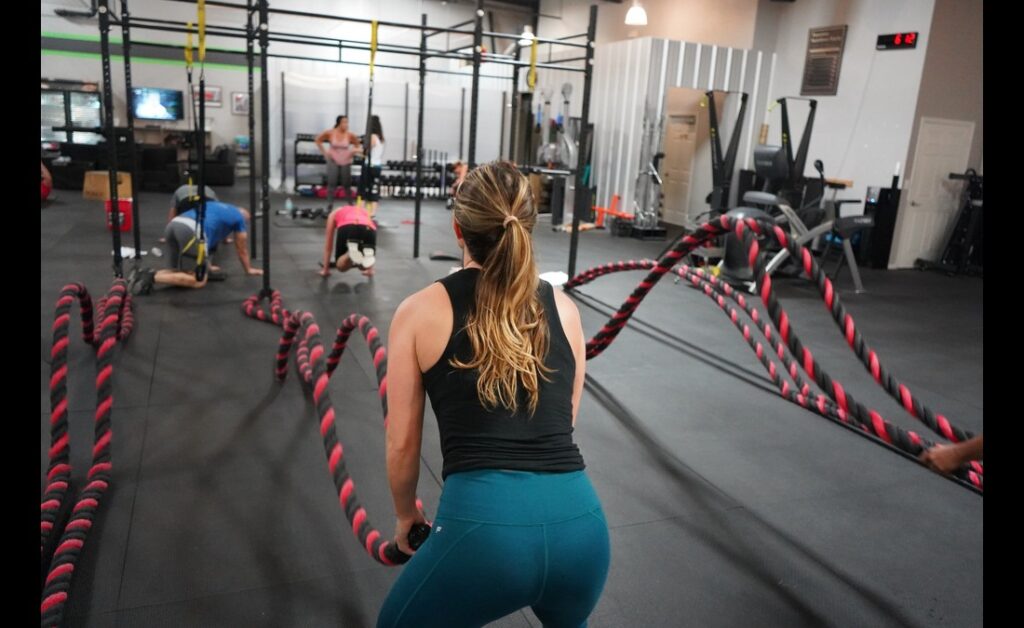Understanding Harmonicode Sport: A New Frontier in Athletic Performance

The evolution of sports technology has brought forth groundbreaking innovations that push the limits of athletic performance. One such development is the concept of harmonicode sport, a term that merges harmony with coding to enhance sports training, performance tracking, and overall athlete development. In this article, we will explore the meaning and applications of harmonicode sport, its potential impact on athletic performance, and its implications for the future of sports science.
What is Harmonicode Sport?
Harmonicode sport refers to the integration of harmonic principles with coding and computational techniques to analyze, predict, and improve athletic performance. The concept draws on the idea of “harmony” — a balanced and synchronized interaction between various elements — and applies it to the world of sports. In this context, “coding” involves the use of advanced algorithms, data analytics, and machine learning to monitor and optimize athletes’ movements, strategies, and overall performance.
The use of harmonic principles in sports is not a new concept. In fact, coaches and trainers have long understood the importance of coordination, balance, and rhythm in enhancing athletic performance. Harmonicode sport takes this understanding to the next level by applying data-driven insights to fine-tune every aspect of an athlete’s performance.
The Role of Data Analytics in Harmonicode Sport
In modern sports, data analytics plays a pivotal role in enhancing performance. Athletes, coaches, and trainers rely on sophisticated software and hardware to gather detailed information about various aspects of performance. With harmonicode sport, this data is processed through algorithms that identify patterns and correlations that might not be immediately visible to the human eye.
Real-Time Feedback for Athletes
One of the key features of harmonicode sport is its ability to provide real-time feedback. By tracking an athlete’s movements, physiological parameters, and biomechanics, the system can offer immediate insights into performance. For example, a runner might receive feedback on their stride length, cadence, and energy expenditure, allowing them to adjust their technique in real time.
This feedback is invaluable in training sessions, as athletes can quickly fine-tune their movements to achieve optimal results. The harmonicode system can also track recovery metrics, ensuring that athletes do not overtrain and risk injury. The real-time nature of the system provides a dynamic learning environment that encourages continuous improvement.
Predictive Analytics and Performance Optimization
Harmonicode sport goes beyond mere observation; it is capable of predictive analytics, which involves using historical data to forecast future performance trends. This predictive power allows coaches and athletes to make informed decisions about training regimens, competition strategies, and recovery periods. For instance, an athlete who consistently struggles with fatigue during the final lap of a race might be provided with a personalized training program that addresses energy conservation techniques, helping them maintain performance under stress.
Injury Prevention and Rehabilitation
Injury prevention is a critical concern in sports. Harmonicode sport helps mitigate the risk of injury by analyzing an athlete’s biomechanics and detecting any irregularities in their movement patterns. By identifying potential weaknesses or imbalances, the system can recommend corrective exercises or adjustments to form that reduce the risk of strain or injury.
Additionally, for athletes who are recovering from an injury, harmonicode sport can monitor the rehabilitation process by comparing current performance with pre-injury benchmarks. This comparison allows for a more objective assessment of recovery progress, ensuring that athletes return to peak performance levels safely.
Harmonicode Sport in Different Disciplines
The beauty of harmonicode sport lies in its versatility. Whether it’s a fast-paced team sport like football or basketball, or an individual discipline such as swimming or track and field, harmonicode principles can be applied to optimize performance across a wide range of sports.
Team Sports
In team sports, harmonicode sport can be used to enhance both individual and collective performance. By analyzing players’ movements and interactions during games, the system can identify strategies that lead to better coordination and teamwork. For instance, harmonicode systems can monitor passing accuracy, positioning, and team dynamics to ensure that players are in the best possible position to score or defend.
Moreover, coaches can use data insights to make tactical decisions during matches, such as substituting players or altering formations based on real-time performance metrics. This can be particularly useful in high-stakes games where split-second decisions can make the difference between victory and defeat.

Individual Sports
For individual athletes, harmonicode sport offers even more detailed analysis. For example, in cycling, harmonicode systems can monitor an athlete’s cadence, heart rate, and power output to suggest optimal pacing strategies for different segments of the race. In tennis, the system can track the speed, angle, and placement of serves and shots to help athletes refine their technique.
Athletes in endurance sports like marathon running can benefit from predictive analytics that helps manage pacing throughout a race. By analyzing an athlete’s historical data, the system can suggest an ideal pace based on their physical condition and past performance. This level of insight gives athletes a competitive edge, allowing them to make better decisions during competitions.
The Future of Harmonicode Sport
The potential applications of harmonicode sport are vast and still expanding. As technology continues to advance, we can expect even more sophisticated systems that leverage artificial intelligence (AI), machine learning, and sensor-based technology to optimize athletic performance. Here are a few areas where we can anticipate growth:
Integration with Wearable Devices
Wearable technology is already a key component of modern sports training. Devices like fitness trackers, smartwatches, and performance monitors collect valuable data on athletes’ physical activity and biometrics. In the future, these devices will be more seamlessly integrated with harmonicode systems, providing even more granular insights into an athlete’s performance. The use of wearables will also make it easier to collect data remotely, allowing athletes to monitor their progress even when they’re not training under the supervision of a coach.
Enhanced AI Coaching
As AI technology advances, we may see the development of AI-driven coaches that can provide personalized training recommendations based on real-time data. These virtual coaches could offer tactical advice, suggest drills, and make training adjustments, all while learning from an athlete’s progress and performance.
Virtual and Augmented Reality in Training
Virtual and augmented reality (VR/AR) have already begun to make their way into sports training, providing immersive environments where athletes can practice without physical constraints. In the context of harmonicode sport, VR and AR can be used to simulate game scenarios, allowing athletes to hone their decision-making and strategy in a controlled setting. With AI-powered simulations, athletes can train in virtually any scenario, improving their skills without the need for actual competition.
Challenges and Considerations
While the benefits of harmonicode sport are clear, there are some challenges that need to be addressed. The first is the cost of the technology. Advanced data analytics, wearable devices, and AI systems can be expensive, making it difficult for some athletes or teams to access these resources. However, as the technology becomes more mainstream, costs are likely to decrease.
Additionally, the integration of such complex systems requires highly skilled professionals, including data scientists, coaches, and sports scientists, to analyze and interpret the data effectively. There is also the issue of data privacy, as sensitive biometric and performance data must be handled securely to protect athletes’ privacy.
Conclusion
Harmonicode sport represents a transformative step in the future of athletic performance. By combining the principles of harmony with cutting-edge data analytics and machine learning, it offers athletes, coaches, and trainers a powerful tool to optimize training, prevent injuries, and maximize performance. As technology continues to evolve, the integration of wearable devices, AI coaching, and virtual reality will push the boundaries of what is possible in sports training. While challenges such as cost and data privacy remain, the potential for harmonicode sport to revolutionize the way athletes train and compete is undeniable. With the right advancements, we may soon see a world where every athlete has the tools to unlock their full potential.





